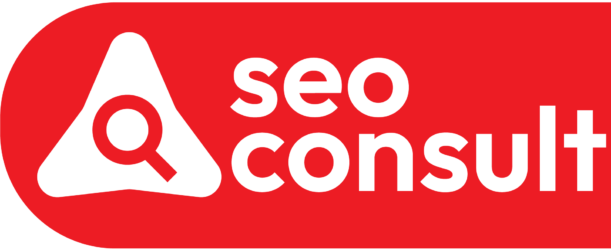In the digital landscape, the quest for optimal website performance remains a cornerstone in achieving visibility and engagement. As the digital realm evolves, so do the technical intricacies that underpin a website's effectiveness. Delving into the realm of SEO, a meticulous approach to enhancing website speed, image optimization, and resource compression can set the stage for a successful online presence. However, the real game-changer lies in the finesse of leveraging browser caching, implementing AMP, and fine-tuning database queries. These technical nuances are pivotal in shaping a website's performance trajectory, ultimately influencing its search engine visibility and user experience.
Importance of Website Speed
The significance of website speed cannot be overstated in today's digital landscape, where user experience and search engine rankings are heavily influenced by loading times. Website speed plays a pivotal role in determining the success of a website, impacting crucial metrics such as website conversion and user experience.
In terms of website conversion, speed is a critical factor. Studies have shown that even a one-second delay in page loading can result in a significant drop in conversion rates. Users expect websites to load quickly, and if a site is sluggish, visitors are more likely to abandon it in favor of a faster alternative. Therefore, optimizing website speed is essential for maximizing conversion opportunities.
Moreover, website speed directly impacts user experience. A fast-loading website enhances user satisfaction, increases engagement, and encourages users to explore more pages. On the contrary, a slow website frustrates users, leading to higher bounce rates and lower dwell times. By prioritizing website speed, businesses can improve user experience, boost retention rates, and ultimately drive better overall performance.
Optimizing Images for Performance
Optimizing images for website performance is a critical aspect of enhancing loading speeds and overall user experience, directly impacting conversion rates and engagement metrics. Image compression techniques play a pivotal role in reducing the file size of images without compromising visual quality. By utilizing formats like JPEG 2000, WebP, or efficient tools such as TinyPNG and ImageOptim, web developers can significantly decrease loading times while maintaining crisp visuals.
Implementing lazy loading benefits website performance by deferring the loading of off-screen images until the user scrolls to them. This technique minimizes initial loading times, allowing the page to load faster and improve the overall user experience. By strategically optimizing the loading of images, websites can achieve better performance on both desktop and mobile devices.
Leveraging Browser Caching
Utilizing browser caching strategically enhances website performance by storing frequently accessed resources locally, reducing server requests, and improving load times for returning visitors. Browser caching optimization involves configuring cache expiration settings to specify how long browsers should retain certain files before checking for updates. By setting appropriate cache expiration times for different types of resources like images, scripts, and stylesheets, website owners can strike a balance between ensuring visitors receive the latest content and minimizing loading times.
Cache expiration settings dictate the duration for which browsers can reuse cached resources without checking back with the server. Longer expiration times can significantly reduce load times for returning visitors by allowing browsers to retrieve resources from their local cache instead of making repeated requests to the server. However, it is crucial to handle cache expiration carefully to avoid issues such as serving outdated content. By fine-tuning cache expiration settings based on the frequency of content updates, website owners can optimize browser caching effectively to enhance website performance.
Minifying CSS and JavaScript
To further enhance website performance after leveraging browser caching, a critical strategy involves minifying CSS and JavaScript files. Code optimization plays a pivotal role in reducing file sizes by eliminating unnecessary spaces, comments, and characters without affecting functionality. Minification enhances load times by decreasing the amount of data that needs to be transferred between the server and the user's browser, ultimately leading to faster page rendering.
Performance testing is essential after minifying CSS and JavaScript to ensure that the website functions correctly and efficiently. It involves evaluating the website's speed, responsiveness, and overall performance to identify any potential issues that may arise from the minification process. By conducting thorough performance testing, developers can address any performance bottlenecks and ensure that the website delivers an optimal user experience.
Implementing Accelerated Mobile Pages (AMP)
Implementing Accelerated Mobile Pages (AMP) significantly enhances the mobile browsing experience by prioritizing speed and performance optimization for mobile users. AMP is a framework that allows web developers to create fast-loading mobile web pages by restricting the use of certain HTML, CSS, and JavaScript elements. When implementing AMP, it is crucial to monitor performance using AMP analytics tracking tools. These tools provide valuable insights into user behavior, page views, and other key metrics to help optimize the AMP pages further. Additionally, staying vigilant about AMP validation errors is essential. Regularly checking for and fixing validation errors ensures that the AMP pages are correctly structured and adhere to Google's guidelines, ultimately leading to better visibility and performance in search results. By addressing AMP analytics tracking and diligently resolving AMP validation errors, website owners can provide a seamless and efficient mobile browsing experience for their users.
Utilizing Content Delivery Networks (CDNs)
Enhancing website performance through the strategic integration of Content Delivery Networks (CDNs) can significantly optimize content delivery and user experience. When implementing CDNs, adhering to CDN implementation best practices is crucial for maximizing their benefits. It is essential to select a reliable CDN provider with a global network of servers to ensure content is delivered efficiently to users worldwide. Additionally, optimizing cache settings, enabling compression, and leveraging browser caching are essential steps in CDN implementation.
To ensure the effectiveness of CDNs, thorough CDN performance testing techniques should be employed. Load testing under various traffic conditions can help identify potential bottlenecks and ensure that the CDN can handle peak traffic loads efficiently. Monitoring response times, latency, and uptime is also crucial to evaluate the CDN's performance accurately. By regularly testing and optimizing CDN configurations, website owners can enhance their site's speed and reliability, ultimately improving user satisfaction and search engine rankings.
Enhancing Server Response Time
Improving server response time is a critical aspect of optimizing website performance and enhancing user experience. Server response optimization involves reducing the time it takes for a web server to respond to a request from a browser. A faster server response time leads to quicker loading speeds, which are essential for engaging users and improving search engine rankings. To achieve website speed enhancements, various techniques can be implemented.
One effective method is to optimize server configurations by utilizing caching mechanisms, compressing files, and minimizing redirects. Additionally, upgrading to a faster web hosting provider or implementing a content delivery network (CDN) can distribute server load and improve response times for users across different geographical locations. Monitoring server performance regularly and addressing any bottlenecks or latency issues promptly is crucial for maintaining optimal server response times.
Eliminating Render-Blocking Resources
To enhance website performance, optimizing the load order of resources and implementing asynchronous script loading are crucial steps in eliminating render-blocking resources. By strategically organizing how resources are loaded, it minimizes the time it takes for a page to render, ultimately improving user experience and SEO rankings. Utilizing these techniques strategically can lead to significant improvements in website speed and overall performance.
Resource Load Order
In the realm of web performance optimization, the strategic orchestration of resource load order stands as a crucial element in reducing render-blocking issues. Resource prioritization plays a key role in determining the sequence in which various website elements are loaded. By strategically ordering the loading of resources based on their importance to the page, web developers can minimize render-blocking problems and enhance overall site speed. Load balancing techniques further contribute to efficient resource delivery by distributing the load across different servers or resources to ensure optimal performance. By carefully managing the load order of resources through prioritization and balancing, websites can significantly improve user experience and search engine rankings by creating faster, more responsive web pages.
Async Script Loading
Resource load order optimization is foundational in addressing render-blocking issues on websites, and a key technique to further enhance performance is implementing async script loading. By using the async attribute in script tags, scripts can be loaded asynchronously, allowing the browser to continue parsing and rendering the page without being blocked by script execution. This method significantly reduces the performance impact caused by render-blocking resources, as it enables parallel downloading and script execution. However, it's crucial to ensure that scripts loaded asynchronously do not depend on one another to prevent any unexpected behavior. Proper implementation of async script loading can lead to faster page load times and improved overall website performance.
Prioritizing Above-the-Fold Content
When considering the prioritization of above-the-fold content on a website, it is crucial to focus on content visibility strategies that ensure key information is presented prominently. Load time optimization plays a significant role in delivering a seamless user experience, emphasizing the need to streamline content delivery for swift loading speeds. Additionally, implementing user engagement techniques above the fold can enhance interaction and encourage visitors to explore further, ultimately improving the overall performance of the website.
Content Visibility Strategies
Strategically prioritizing above-the-fold content is essential for optimizing website performance and enhancing user experience. Implementing lazy loading techniques can help improve content visibility by loading only the content that appears within the user's initial view. By utilizing lazy loading, websites can reduce initial load times, leading to faster perceived performance. Additionally, employing content visibility techniques such as optimizing CSS delivery and deferring non-critical JavaScript can further enhance the visibility of key above-the-fold content. This strategic approach ensures that users can access essential information without delays, ultimately improving user engagement and satisfaction. By carefully managing above-the-fold content visibility, websites can create a seamless browsing experience while maximizing performance metrics.
Load Time Optimization
To enhance website performance and prioritize above-the-fold content, optimizing load times is crucial for engaging users efficiently and effectively. Server response time plays a key role in load time optimization, as a fast server response ensures that content is delivered quickly to users. Additionally, efficient content rendering is essential for above-the-fold content, ensuring that the most important information is displayed promptly. By prioritizing above-the-fold content during the loading process, users can quickly access the core message of the website without delays. Implementing strategies to minimize server response times and streamline content rendering will lead to a smoother user experience and improved website performance overall.
User Engagement Techniques
Implementing user engagement techniques that prioritize above-the-fold content is essential for capturing and retaining visitors' attention effectively on a website. Interactive design elements such as sliders, videos, or call-to-action buttons strategically placed above the fold can significantly enhance user interaction. By analyzing engagement analytics, website owners can gain insights into which content or features resonate most with their audience. This data-driven approach allows for continuous optimization to improve user experience and drive conversions. Prioritizing above-the-fold content ensures that visitors are immediately drawn into the site's most relevant and engaging information, increasing the likelihood of prolonged user engagement. By combining interactive design principles with engagement analytics, websites can create a compelling and user-friendly experience that encourages visitors to explore further.
Conducting Regular Performance Audits
Regular performance audits play a crucial role in maintaining and enhancing the efficiency of a website. By utilizing performance monitoring tools and conducting in-depth website speed analysis, businesses can identify bottlenecks, optimize loading times, and improve user experience. Regular maintenance is essential to ensure that the website operates at peak performance levels consistently. Performance testing should be conducted periodically to assess how the site performs under different traffic conditions and to pinpoint areas for improvement.
Performance monitoring tools like Google PageSpeed Insights, GTmetrix, or Pingdom can provide valuable insights into various performance metrics such as page load times, server response times, and overall page performance scores. These tools allow web developers to track performance trends over time, identify areas of concern, and implement necessary optimizations.
Incorporating regular performance audits into a website maintenance strategy ensures that the site remains competitive in today's fast-paced online environment. By proactively addressing performance issues, businesses can enhance user satisfaction, improve search engine rankings, and drive better overall results.
Caching Static Assets
Caching static assets is a pivotal strategy in optimizing website performance and enhancing user experience. By utilizing browser caching techniques and implementing asset caching best practices, website owners can significantly reduce load times and improve overall performance. Browser caching involves storing static files, such as images, CSS, and JavaScript, on a user's device after the initial visit. This allows subsequent page loads to be faster as the browser can retrieve cached assets locally instead of downloading them again from the server.
To effectively cache static assets, it is essential to set appropriate cache-control headers to define how long the assets should be stored in the browser cache. Leveraging techniques like versioning filenames or utilizing content delivery networks (CDNs) can also aid in optimizing asset caching. Moreover, optimizing cache expiration times and utilizing cache busting methods can ensure that users receive the most up-to-date content while still benefiting from cached assets. By implementing these strategies, websites can enhance speed, reduce server load, and provide a smoother browsing experience for visitors.
Optimizing Database Queries
To enhance website performance, optimizing database queries is crucial. This involves employing query optimization techniques, utilizing indexing for improved performance, and implementing caching strategies to boost speed. Understanding these key points will help streamline database operations and ultimately enhance overall website efficiency.
Query Optimization Techniques
When aiming to enhance website performance, one crucial aspect to focus on is implementing effective query optimization techniques for database queries. Query optimization involves refining the structure and execution of database queries to improve speed and efficiency. Techniques such as indexing, query caching, and minimizing unnecessary data retrieval can significantly enhance the performance of database operations. Furthermore, utilizing schema markup and meta tags correctly can aid in providing search engines with valuable information, thereby improving the overall visibility and accessibility of the website. By strategically optimizing database queries and leveraging key SEO elements like schema markup and meta tags, website owners can create a more responsive and user-friendly online experience while also boosting search engine rankings.
Indexing and Performance
By strategically implementing indexing techniques, website owners can significantly enhance the performance of database queries, thereby improving speed and efficiency in data retrieval processes. Indexing strategies play a crucial role in optimizing database performance by organizing data for quick access. Performance metrics such as website speed and server response time are directly impacted by the effectiveness of indexing. Properly indexed databases allow queries to be executed faster, reducing latency and enhancing user experience. Website owners should analyze query patterns and data access frequency to determine the most suitable indexing strategy. Regular monitoring and fine-tuning of indexes based on performance feedback are essential to maintain optimal database efficiency. Efficient indexing not only speeds up query execution but also contributes to overall website performance.
Caching Strategies for Speed
Efficient utilization of caching strategies is paramount in optimizing database queries for enhanced speed and performance on websites. By implementing caching mechanisms, such as CDN integration and server response optimization, redundant database queries can be minimized, leading to faster load times and improved user experience. Content Delivery Network (CDN) integration allows for the storage of frequently accessed data closer to the user, reducing latency and server load. Additionally, optimizing server responses by caching query results can significantly decrease the time required to retrieve information from the database. By strategically implementing these caching strategies, websites can achieve quicker page load times, reduce server load, and ultimately enhance overall performance and user satisfaction.
Compressing Website Resources
To enhance website performance, one effective strategy is to compress the resources used on the site. Compressing website resources involves reducing the size of files like HTML, CSS, JavaScript, and images. This optimization technique significantly improves responsiveness by decreasing loading times. Efficiency in delivery is enhanced as smaller files are quicker to transfer over the network, leading to faster page rendering.
There are several methods to compress website resources. One common approach is using GZIP compression, which reduces file sizes before they are sent to the browser. This technique is particularly effective for text-based files like HTML, CSS, and JavaScript. Additionally, optimizing images through tools like ImageOptim or TinyPNG can significantly decrease their size without compromising quality.
Implementing Lazy Loading for Images
In the realm of website optimization, the integration of lazy loading for images emerges as a key strategy to enhance user experience and boost loading speeds. By implementing progressive loading techniques, websites can prioritize the loading of visible content first, reducing initial load times and allowing users to interact with the site sooner. Image lazy loading benefits extend beyond just speed improvements; they also help conserve bandwidth for users by only loading images as they come into view, rather than all at once.
One of the primary advantages of lazy loading is its ability to significantly improve page loading times, especially on image-heavy websites. This can lead to lower bounce rates, increased user engagement, and ultimately better SEO performance. Additionally, by deferring the loading of off-screen images, lazy loading contributes to a smoother browsing experience, particularly on mobile devices with limited resources. Overall, the strategic implementation of lazy loading for images can have a substantial impact on website performance and user satisfaction.
Monitoring Performance Metrics
For effective website optimization and performance enhancement, closely monitoring key performance metrics is essential. Real-time monitoring analysis and performance metric tracking play a crucial role in ensuring that a website is functioning at its optimal level. By continuously tracking metrics such as page load time, server response time, and overall site speed, webmasters can identify areas that need improvement and take proactive measures to enhance the user experience.
Real-time monitoring analysis allows for immediate detection of any performance issues that may arise, enabling quick resolutions to maintain the website's efficiency. By leveraging performance metric tracking tools and technologies, web developers can gain valuable insights into how various elements on their website are impacting its overall performance. These metrics provide quantitative data that can guide decision-making processes aimed at improving website speed and user satisfaction.
Frequently Asked Questions
How Can I Effectively Troubleshoot and Fix Performance Issues on My Website?
To effectively troubleshoot and fix performance issues on your website, you can start by optimizing browser caching to reduce loading times. Image optimization can also enhance site speed by compressing images without compromising quality. Minifying code can streamline your website's codebase for quicker loading. Utilizing content delivery networks (CDNs) can distribute content geographically to enhance loading speeds for users worldwide. These strategies can collectively improve your website's performance and user experience.
What Are Some Common Pitfalls to Avoid When Optimizing Website Performance?
When optimizing website performance, it is crucial to avoid common pitfalls such as neglecting image compression techniques that can slow down loading times. Additionally, excessive third-party scripts should be minimized to prevent delays in rendering. Implementing effective caching strategies can significantly improve page speed and user experience. Mobile optimization is also essential to ensure that websites perform well on various devices, helping maintain a competitive edge in the digital landscape.
How Can I Ensure That My Website's Performance Improvements Are Sustainable in the Long Term?
To ensure sustainable performance improvements for your website in the long term, it is crucial to implement long-term monitoring strategies. By regularly monitoring key performance indicators and making adjustments based on data insights, you can maintain optimal website performance over time. Continuously evaluating and optimizing your website's performance will help ensure its sustainability and effectiveness in meeting user expectations and search engine requirements.
What Are Some Advanced Techniques for Optimizing Website Performance That Are Not Covered in This Tutorial?
When looking for advanced techniques to optimize website performance beyond the basics, two key strategies are server-side caching and image optimization. Server-side caching involves storing frequently accessed data to reduce the need for repeated processing, thus improving load times. Image optimization focuses on reducing image file sizes without compromising quality, leading to faster loading speeds. Incorporating these techniques can further enhance website performance and user experience.
How Can I Balance Website Performance Optimizations With Maintaining a Visually Appealing and User-Friendly Design?
Balancing website performance optimizations with maintaining a visually appealing and user-friendly design is crucial for ensuring a positive user experience. By focusing on design aesthetics and speed, you can create a seamless and engaging interface while also implementing optimization strategies to enhance overall performance. Consider optimizing images, minifying code, and utilizing caching techniques to improve speed without compromising the design. Prioritizing user experience while implementing these strategies will lead to a successful balance.
Conclusion
In conclusion, optimizing website performance is crucial for enhancing user experience and improving search engine rankings. By implementing various technical SEO strategies such as optimizing images, leveraging browser caching, minifying CSS and JavaScript, implementing AMP, optimizing database queries, compressing resources, and implementing lazy loading for images, websites can achieve faster loading speeds and better overall performance. Monitoring performance metrics is essential in identifying areas for improvement and ensuring continued optimization efforts.










